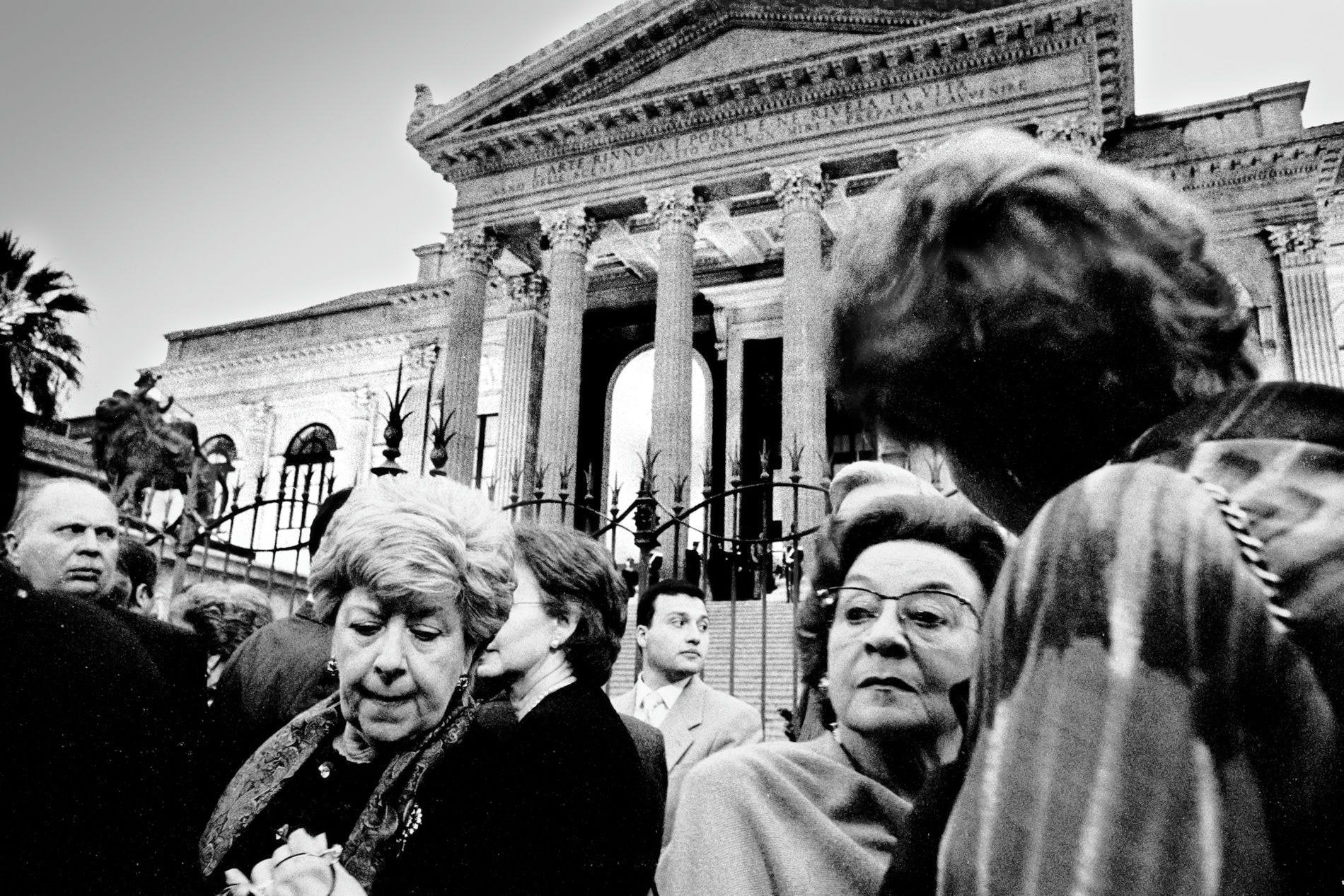On May 12, 1997, after a long-awaited 23 years, the glorious Teatro Massimo of Palermo finally reopens its doors. This event is greeted with enthusiasm and excitement by the citizens, eager to witness the revival of one of the city's most important cultural symbols. The atmosphere is filled with emotions and expectations, and the true stage moves from the theater hall to the majestic entrance staircase, where the Palermo "nobility" displays its splendor, exuding a joy and satisfaction that cannot be contained.
It's a kaleidoscope of smiling faces, elegant attire, and sparkling accessories. There are well-dressed individuals, women with a Kafkaesque charm, and a diverse array of characters that seem to come from a prehistoric era. After a long exile of twenty-three years, they proudly reappear, adorned with lavish necklaces and gold cufflinks, as if to demonstrate their fleeting power.
But the event goes beyond mere news. One can imagine the anticipation that built up in the preceding days, with people rushing to book appointments at the hair salon to showcase their best look, and long queues at the ticket office to secure a coveted ticket. There is the eager anticipation of the show's beginning, the feeling of luck in being able to proudly say, "I was there!" To be part of a historic moment that will leave an indelible mark on collective memory.
The reopening of Teatro Massimo represents not only the end of a period of silence and neglect but also the triumph of culture and art over all difficulties and adversities. It is a symbol of rebirth and hope that invites the city and its people to rediscover and appreciate the artistic and cultural heritage that surrounds them.
Teatro Massimo is much more than a splendid theater. It is a place that encapsulates stories, emotions, and dreams. Its reopening signifies a new chapter in the history of Palermo and all those who love art and beauty.














